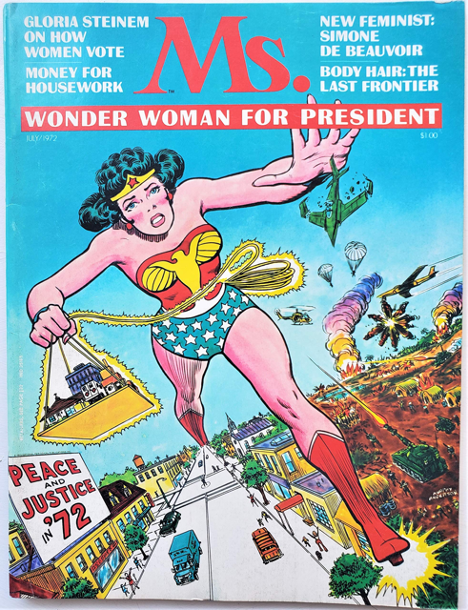The Middle East is a stewpot of millennia old resentments – tribal envy, ethnic animosity, and territorial covetousness – historic sites, beautiful people, extreme poverty, oil fortunes, and political intrigue with an underlying stench of greed and desperation.
The grisly, murder, dismemberment, and disposal of Saudi journalist Jamal Khashoggi is the latest iteration of this ages old situation. It usually takes years to give us distance from real life events, like the Saudi murder, in order for them time to become the subject of artistic expression. Such is the case with a play now on stage at ACT Theatre in Seattle. The issue is still current, though the play is about a 1993 attempt to address the “Palestinian problem.”
Last weekend, M and I saw Oslo,the Tony Award-winning play based on the Oslo Accords – a most unlikely subject for live theater. The play chronicles the back-channel effort by two low ranking Norwegian diplomats to engineer a solution to the problem of Israel and the 700,000 Arab/Muslim people displaced during its formation. It was always difficult to imagine Israel and the PLO (Palestine Liberation Organization) coming together to craft a solution, but the Oslo Accords nearly pulled it off. If Itzhak Rabin and Shimon Peres representing Israeli and Yasser Arafat and Abu Ala on the Palestinian side seemed like intransigent foes, think of today’s protagonists – Benjamin Netanyahu and Mahmoud Abbas – finding common ground.

The drama is Shakespearean in scope and intensity. Would that Shakespeare could have stuck around to distill its essence and bring its players to the stage? J.T. Roger’s Oslo is an ambitious three-hour attempt to give us a metaphor for what’s wrong with the world today. Envy, greed, hatred, distrust, ambition, subjugation, lies, courage and cowardice are all part of it.
The play is a cliff-hanging depiction of the conflict. Its locus is the Holy Land—the intersection, two-thousand years ago – of the world’s three “great” religions. Today, our myopic focus views the problem’s origins in the founding of the Jewish state in 1948 and the resulting expulsion of 70,000 Palestinians from their homes. The real origins and resentments go back to the time of Christ, the founding of Constantinople and the Eastern Orthodox church, the Crusades and their failure, the coming of the Ottoman Empire in 1299 and its breakup at the end of World War I and its subsequent artificial boundaries established by colonial powers. Each period gave way to a rival ideology – Judaism to Christianity to Islam to secularism – and the bastardizations that resulted when sacred ground became the disputed currency of their respective geopolitical units.

In 1972 Beirut was an overnight stop on Pan Am’s famous Round-the World flights (001 and 002), and one night on the way to the luxurious Phoenicia Hotel our crew bus passed the Shatila refugee camp (above), home to thousands of Arabs exiled from Palestine in 1948. As we passed the camp, the Captain and I wondered aloud how long this explosive sub-human situation could continue. Two nights later, terrorists were foiled in their attempt to hijack a Pan Am airplane on the tarmac at the Beirut airport, the first of several such attacks. Beirut, the Paris of the Middle East, was about to become a war zone.
In 2019 the Shatila camp will be 70 years old, and the UN reports that despite the Lebanese civil war, an Israeli invasion, Hezbollah uprisings, and recurring Israeli air strikes, the camp remains home to 9,842 Palestinian refugees.
But first it was the Jews that were displaced and dispersed. The “diaspora” which began with the Babylonian exile in the 6th century BC, spread Jews and Jewish culture around the world – but their ongoing hope was always to return the Chosen People to their Biblical promised land. The Jews of the diaspora were admired and reviled in life and in the arts. Chaucer, Shakespeare, and Dickens all had despicable Jewish villains. On the world stage, depending on the viewer, they were seen as successful bankers, generous patrons of the arts, greedy money changers, and Christ-killers until Hitler established them as the perfect foil for his genocidal misanthropy and all that was wrong with Germany post WWI.
The fortunes of Israel since 1948 have been as tumultuous as its larger historical legacy. Following the genocidal events of WWII there was considerable sympathy and good will supporting the establishment of a Jewish state. For decades following its formation, talented diplomats attempted to thread the needle with an indigenous Arab population that outnumbered the new nation’s Jewish immigrants. Ben-Gurion, Golda Meir, Menachem Begin, Itzhak Rabin, and Shimon Peres all were conscious of the tightrope they walked and the need to find a solution to the growing upset of local Arabs and the displacement of thousands of other Palestinians.
A two-state solution i.e. the creation of parallel Jewish and Arab states, had been proposed as early as 1937 during the British Mandate of Palestine, but following the foundation of Israel the local Arab population and displaced Palestinian refugees could never muster enough support to counter the growing power of Israel.
This is the background for the “Accords” and Oslo, the play by J.T. Rogers. An earlier attempt at resolution, the Camp David Accords (Jimmy Carter, Anwar Sadat, and Menachem Begin), failed when Yasser Arafat refused to buy-in and Anwar Sadat, the Egyptian leader was murdered. With that in the background, it seemed unlikely that a back-channel attempt by two Norwegians would be successful. Starting low on the diplomatic totem pole, with non-governmental representatives from both sides, the Norwegians coddled, complimented, cajoled, (and fed) the participants until the higher-level government officials were reluctantly coaxed into participating in the negotiations.
The play runs three hours with two intermissions. It’s a hard slog at times on a Friday night after cocktails and a pizza, but it’s worthy of the Tony it received in 2017.
Needless to say, the unimaginable Oslo Accords arrived at by the Israeli and PLO representatives ultimately failed, but not because of disagreements between the parties. They had found agreement and comity among themselves – a tribute to the value of face to face negotiations between antagonists. No, in the end, it failed because the agreeing parties couldn’t convince their constituent populations to let go of their hatred and ages-old resentment. First, Itzhak Rabin, the Israeli prime minister was murdered by one of his own and in the aftermath Arafat couldn’t control terrorist bombers blew up civilian busses and cafes in Tel Aviv. The hostilities escalated from there.
Today, a solution to both “the Palestine problem” and the broader Middle East disequilibrium seems out of reach despite earlier efforts like the Camp David and Oslo Accords. For a moment, in 2011, the grass roots movement of the Arab Spring challenged totalitarian regimes across the region and held out the promise of democratic change, but chaos and suppression took the air out of the movement and blocked its chances.
 In Israel, the hard right-turn of the government, and its aggressive, unauthorized building of settlements on the West Bank, combined with the Trump administration’s provocative Embassy move to Jerusalem and withdrawal of financial aid to the UN Palestinian Refugee Fund and Gaza to put an end to talk of a two-state solution. It’s difficult to imagine two self-dealing heads of state like Benjamin Netanyahu and Donald Trump, both under investigation for corruption by their own governments, making any effort to help the Arab and Palestinian populations take a meaningful step toward statehood. And, with a rank amateur like Jared Kushner in charge of Middle East policy it’s a setup for even greater tragic error.
In Israel, the hard right-turn of the government, and its aggressive, unauthorized building of settlements on the West Bank, combined with the Trump administration’s provocative Embassy move to Jerusalem and withdrawal of financial aid to the UN Palestinian Refugee Fund and Gaza to put an end to talk of a two-state solution. It’s difficult to imagine two self-dealing heads of state like Benjamin Netanyahu and Donald Trump, both under investigation for corruption by their own governments, making any effort to help the Arab and Palestinian populations take a meaningful step toward statehood. And, with a rank amateur like Jared Kushner in charge of Middle East policy it’s a setup for even greater tragic error.
The stewpot continues to simmer in the Middle East and, as the Captain and I agreed driving by the Shatila refugee camp in Beirut, the situation is a powder-keg ready to blow again if regional powers don’t find a solution.
The play we saw last week was a lesson in hope…failed hope but hope nevertheless. Unfortunately, the Oslo Accords were unsuccessful, but the Berlin Wall and the collapse of the Soviet Union were also unimaginable – examples of how seemingly intractable political adversaries could achieve extraordinary results…when the will is there and the parties show courage above self-interest.
































Good piece Jack. I recall passing the Shatila camp many times on the RTW trips with one memorable encounter where Lebanese troops set up a machine gun on one bend in the road to the airport and the Palestinians on the other side and they were having a fire fight. We passed through with bullets flying everywhere and the crew bus took some hits, troubled times, late 60’s.
One other note: Regarding the 70000 displaced Palestinians, they were not expelled by the Israeli’s but were ordered out by the Arab League in preparation for the initial invasion and they were promised that as soon as the Jews were eliminated they could return. Of course this never happened but the Israeli’s left the homes and property untouched which I saw on a personal visit in the 70’s. I was riding along the beaches near Jaffa and asked why there were deserted homes on such beautiful plots of land and it was explained to me by my Israeli host what had transpired. Though I visited many times since I have to assume these properties were eventually taken by Israel after so many years of fruitless wars, I never followed up.
Bless you, Jack. What a powerful summation of the mess. Sorry I hadn’t read this sooner.